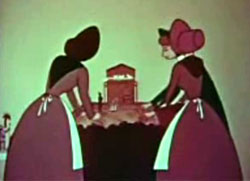Genre movies have a special place in my heart. There is a comfort with them, you pretty much
know what to expect, and that is a good thing.
There is a time for a film that shakes ones expectations, that brings us
to places we’ve never been before, but sometimes we need the familiar. We need tropes that affirm that the world is
regular and follows certain rules—at least the film world, if not the world
around us. A good genre film may not
make us laugh or cry, but it is a cozy flame in a fireplace on a winter
day. And sometimes we need just that.
The balance a genre film—whether noir, romantic comedy,
western, musical or other—must achieve is to maintain that familiar, but to
also be interesting. There must be both
the trope and the novel, the familiar and the surprise. Because no film should make us so comfortable
that we fall asleep. But where that line
is drawn is different for different people.
Some can find the unique in very subtle ways, while others are more demanding of their
genre films, demanding some kind of subversion of what is often expected.
I usually prefer the remarkable as opposed to the
comfortable, but this week I sat down to two musicals very comfortable in their
genre: musicals. In looking at their
performers, we know that we shouldn’t expect much in the way of
subversion: Doris Day in The Pajama Game
and Fred Astaire in Funny Face. So I
settled in to the familiar, and hoped that there would be enough uniqueness to
keep me awake.
First comes The Pajama Game,
which from the first scene we know that it is imitating a Broadway-style
song-and-dance, which makes sense since the musical and all the performers
(except from Doris Day) came straight from the successful stage play. Doris Day is unexceptional here, but her
co-lead John Raitt has a remarkable voice (I found myself wanting to sing
along). But the real star here is Carol
Haney in the supporting role of Gladys.
Every time she participates in a song, the film brightens and gathers
energy.
And, honestly, it needed some
energy. There is a wonderful scene when
there is a revisit of an earlier song, except done at half speed. In the end, this is how I felt the whole
movie to be. The dancing was uninspired,
the songs unexceptional. And there was
something else missing… but I just couldn’t put my finger down on it. With the exception of a few musical numbers—“Hernando’s
Hideaway” and “Steam Heat” especially—this film was pretty much a snooze.
Then came Funny Face with Fred
Astaire and Audrey Hepburn… and Kay Thompson playing a pivotal third
wheel. I have two confessions to make
before I begin. First, this is the first
time I have seen Fred Astaire in a film since I saw Easter Parade as a young
teen. And I am not a fan of Audrey Hepburn. I have seen both Breakfast at Tiffany’s and
My Fair Lady and both films are wonderful—except for Ms. Hepburn. She seems flat in both roles, just filling
dresses, but not the characters (and this isn’t because of my deep
disappointment that Julie Andrews wasn’t able to reprise her stage role as
Eliza). So I entered into this film not
expecting much.
I was quite, quite pleased. First, the Gershwin songs were clever, jazzy
and fun—everything good you expect from Gershwin. The dance was energetic and fun, a true
pleasure to watch, all except Fred Astaire.
Okay, now I get it. I mean, I’ve
seen the rotating room dance, and some tap dancing by the master, but now I
know why Astaire is the dance Master—it was like he floated, defying
gravity. When he and Audrey dance upon
the water platform and drift to the middle of the stream, I gasped aloud—that was
musical perfection.
But I also found in this film
what I was unknowingly missing in The Pajama Game—chemistry. Both movies are musical versions of a typical
romantic comedy. The secret to a good
romantic comedy is chemistry. You can
put in as much ridiculous, insane, unrealistic situations and characters around
the main characters, but the central relationship has to be believable. As much musical time as The Pajama Game spent
on the central relationship, I just didn’t buy it. These were strangers, not lovers.
Funny Face played it almost
perfectly. Fred, the experienced actor,
acted the experienced man. He expected
nothing out of Audrey, and his love was pushed deep, coming out only in his
plan to make her the next fashionista. Audrey is the girl next door, even when she
is a fashionista, and her performance is perfect in every scene. Her love is intellectualism, but her
attraction to Astaire seemed natural and wonderful. The
only fault I find in their relationship is when they confess their love to each
other, which is so sudden and silly I’m surprised the performers didn’t burst
out laughing in the midst of it (perhaps that was an earlier take).
But overlooking that, the film
was wonderful. It was everything I
expected from a great musical: perfectly performed and full of joy and great
dancing. I don’t care that a
photographer and his subject doesn’t break into dance in the middle of a
shot. In this film, I believed it and I
was glad to be with them, appreciating their happiness.














